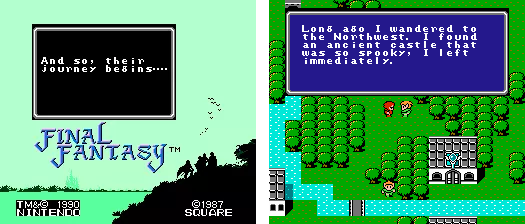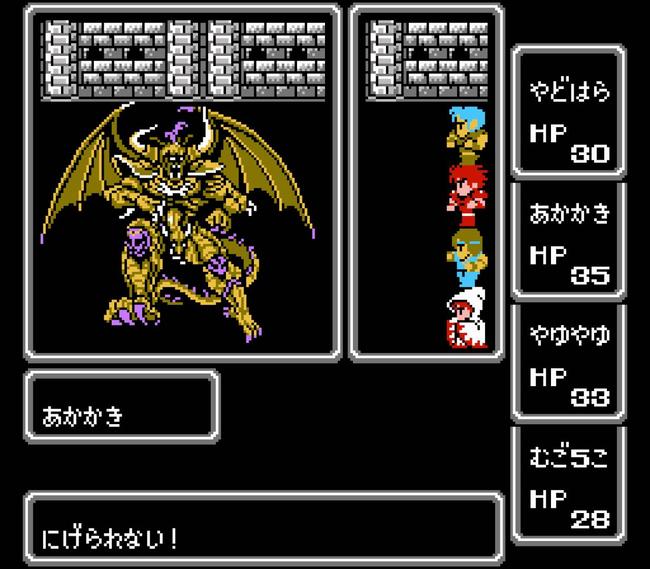
If you want to play the original Final Fantasy today, you should do it on NES
I wouldn’t call this a confession – if you’re a regular listener to RPG Site's Tetracast podcast, then you’ll already know my deep, dark RPG secret. While I might have played several Dragon Quests, enjoyed most of the Kingdom Hearts series, got lost in Chrono Trigger, and even reviewed a SaGa or two – I hadn’t touched a mainline, numbered Final Fantasy until I started my journey with Final Fantasy XIV early last year. All of those references in FF14 that I’m sure other players got giddy over? Well, while I’m not daft enough to miss the most obvious connections, the vast, vast majority of them soared over my head like an airship.
I always knew that I had to rectify that eventually, and it just so happened that the news that Final Fantasy XVI was being developed by the same team that I’ve grown so attached to with XIV was just the excuse I needed to kick me into action – so, going into 2021, one of my goals became to play through every other numbered Final Fantasy in prep for it. Originally I was planning on playing the PSP version of Final Fantasy I to start things off when RPG Site publisher and mega Final Fantasy nerd Alex Donaldson suggested if I was going through the effort of playing the series in order, I ought to start with the original version of FF1. The NES version.
I have to thank him – it’s a choice that I wouldn’t have come to on my own, but after playing the original Final Fantasy, warts and all, for myself, I can say that I agree. If you’re going out of your way to play the original Final Fantasy in 2021 (and beyond), you’d be doing yourself a disservice to pass over the original for the modern PSP/Mobile releases.

There are aspects of the original Final Fantasy that have long-since left the franchise, ironed out for ease of use. If you kill an enemy, for instance, any other ally that was targeting that same enemy will instead attack thin air, wasting a turn. Instead of the modern MP system, the game utilizes an approach with more in common to tabletop RPGs like Dungeons & Dragons – each spell is assigned a power level, and as you level up your mages they’ll gain access to a number of “charges” for each level of spellcasting. Some might say that these are obtuse mechanics that maybe deserve to wither away in the past, but their allure and historic relevance as part of the first Final Fantasy are clear.
Despite what appears to be its reputation, the original NES Final Fantasy isn't exactly a difficult game – it just requires you to engage with it, and have a game plan for tackling its numerous challenges. I don’t think it’s a coincidence that many of the game’s dungeons feature branching paths, with only one way leading to your goal. While the level design itself might have some issues, I don’t necessarily think that the ideas behind that level design aren’t valid. For example, let’s consider the first real dungeon of the game – Marsh Cave.
Enemies in this dungeon tend to be weak to Holy and Fire attacks, which means that you might be tempted to spam them early on to make things easier for yourself on the trek to the strong enemies guarding the chest containing your prize. That comes with the caveat that you’d likely be weak, and without enough of your attack magic, for when you finally get there. Unlike other dungeons in the game, you can’t exactly teleport out of the dungeon once you’ve received the crown that you need to progress the story – so even if you did manage to kill the enemies guarding it, you’d still have to worry about dragging yourself out of the cave before you can even save, let alone restore your spell charges.
While you can probably clear a dungeon on your first attempt with enough preparation, it feels like the game wants you to take your time, exploring each floor and perhaps more importantly learning about the enemies that can be found there. Some enemies you can (and should) fight with little to no issue; others you might want to run from, as dealing with them requires resources that might be better spent elsewhere. Like, for example, on groups of enemies that you cannot flee from.
So, the branching paths. Final Fantasy is a game explicitly about resource management, planning, and the path of least resistance. The easiest path is likely the best one available to you, and rarely are there very explicit difficulty spikes that you shouldn’t be ready for, assuming that you’re playing cautiously. Dungeons are dense, confusing, and not necessarily well-designed. At a minimum, though, they’re clearly meant to be confusing.

If you end up taking the north path instead of the south path on your first trek into Marsh Cave, you’ll likely be frustrated to discover that you’ve hit a dead-end – wasting resources, even if you might’ve gained early access to some gear that you otherwise might’ve picked up later on in the cave. You’ll want to backtrack, leave the cave, refresh your party, and try again. What you’ve lost in time, however, you’ll have gained in knowledge, like an understanding of some of the enemies to be found in the cave, what they’re weak to, which ones you can run from, and so on. This is the point; in this game's original 1987 design, you're not necessarily supposed to one-shot all of these dungeons.
While levels and gear can certainly help you on your journey in FF1 – I’d argue that your most important asset is your knowledge, with the second most important being foresight. Although the game never outright tells you where to go next in the story, talking to NPCs will give you a fairly good idea. The game expects a lot from the player compared to many modern RPGs, but I wouldn’t say that what it asks for – your respect – isn’t actually all that much in the grand scheme of things. If you have any experience playing tabletop RPGs, it’s very easy to see the parallels here, and with a tabletop mindset it’s not difficult to feel right at home.
Just to make no excuses for it – I’d be remiss if I tried to argue that Final Fantasy's original NES version hasn’t aged, because it certainly has. It’s decent-looking for the NES, with particularly brilliant enemy art, but even when it was new the cracks were well visible. Many of the game’s features were bugged, others just outright didn’t work. I used a guide to help myself through the process, and I absolutely wouldn’t begrudge you for doing the same. There are simply some aspects of the experience you must be aware of going in, and I can’t blame any players that want to be able to play a game blind – you’re in for a bad time if you’re trying that with FF1.
Final Fantasy Origins – the PS1 compilation of the Wonderswan versions of the first two games is probably the best, most accessible version of Final Fantasy that you can play today, if you’re avoiding the modern mobile release based off of the PSP port. It fixes the bugs that plagued the original, while maintaining many of the aspects of the original’s design that I now believe to be an important part of its identity. I’d still argue that if you’re ever serious about seeing where the Final Fantasy series started, you really owe it to yourself to play the original – bugs and all.